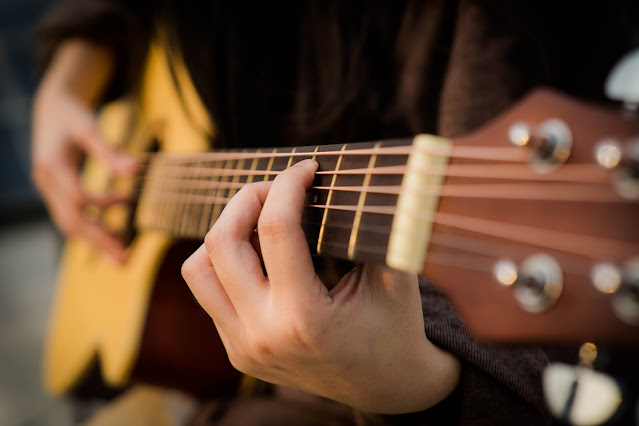In this lesson we’re going to be looking at the musical alphabet.
The alphabet is one of the first things you do when you learn any new language, and the same is true for the language of music.
Before we learn anything new, I think it’s really important to understand why we’re learning it. So let me tell you why the musical alphabet deserves its own lesson.
Why the musical alphabet is important
Any song you’ve ever heard, or learned to play, was written using the musical alphabet.
It’s the building block for musical scales and keys. Understanding it, and its rules, will help you to work out melodies by ear as we move through this course.
During this lesson, I’m going to be referring to the piano because it will really help you to visualize the theory. But, don’t worry, you don’t need any prior knowledge of the piano at all in order to be able to follow along.
You’re not going to be playing your guitar for the first couple of lessons because they're about understanding the rules of the game. Once you understand the rules, you can start applying them when you play.
You will learn:
- The 12 notes of the musical alphabet
- Why some notes have two values assigned to them
- The whole steps and half step between the 12 notes
- What the two dots at the twelfth fret of your guitar represent
- The open values of each guitar string
- How to name each note, on each string of the guitar
The 12 notes of the musical alphabet
The musical alphabet is made up of 12 individual notes. It’s best to visualise the alphabet by looking at the notes on a piano.
A piano is essentially a repeating set of 12 notes. Those 12 notes simply repeat all along the instrument, albeit at a higher pitch as they go.
I’m going to point out three important things to notice when we look at the musical alphabet in this way. Then, when you understand those points, we’re going to look at how to transfer this knowledge onto the guitar fretboard.
- Point one is that some of the notes have two values assigned to them (such as the C# and the Db)
- Point two is that not all white notes have a black key in between them
- Point three is that we have two notes with the same value - in this case, it’s the note
Point one - Musical notes with two values
You might have noticed that all black keys on the piano have two note values assigned to them, for example the C# is also the Db.
This is because if we are moving up the musical alphabet the note is sharpened. When we move in the other direction, down the musical alphabet, we are flattening the note.
It’s the same note, the same sound, but we change the name depending on the direction of travel (whether we are ascending, going up the scale, or descending, going down the scale).
In musical terms, these are called enharmonic notes.
Point two - Not all white keys have a back key between them
The second thing to notice is that not all of the white notes have a black key in between them.
You’ve probably heard of do, re, mi, fa, so, la, ti, do. Well, each of these sounds represents a whole note in the scale (think of the white notes on a piano).
Between some of these whole notes, there is a half step (or a semi-tone), represented by the balck keys.
One of the early points you’ll need to remember in music theory is that there aren’t any of these ‘half steps’ between the notes B and C, or between the notes E and F.
Point three - two notes with the same value
The third thing you may have noticed is that two notes have the same value (in the example above, the scale starts and ends on the C).
This is because if we move up all twelve notes in the alphabet, we’ve moved 8 whole steps back to our starting note - this is called an octave.
So moving from do, re, me fa, so, la, ti and back to do, is an octave. The pattern then repeats at a slightly higher pitch.
Applying this theory to the guitar fretboard
How does this relate to the guitar fretboard? Well, you can play all 12 musical notes in any scale, on each individual string of the guitar.
Just like on the piano, each time we step up a fret, we hit a new note in the alphabet - just like playing the next key on a piano. Each fret represents what we call a semitone in music, (or half step) from one note to the next.
What the markers on the 12th fret of your guitar are for
The open note values of guitar strings
Guitar practice journal
Download the Guitar Practice Tracker today. It will help to keep you motivated and give you a visual representation of your progress, and areas of focus throughout the year.
A guitar journal will enable you to:- Set personalised goals and monitor your progress
- Identify the number of hours or days you've spent on a particular skill
- Provide a quick reference to the notes and chords in a particuar key
- List the songs you know and sort by key, capo placement, artist, and chord progression
- Link directly to your favourite YouTube videos and tutorials
Download the Guitar Practice Tracker
Photo by Quốc Bảo



